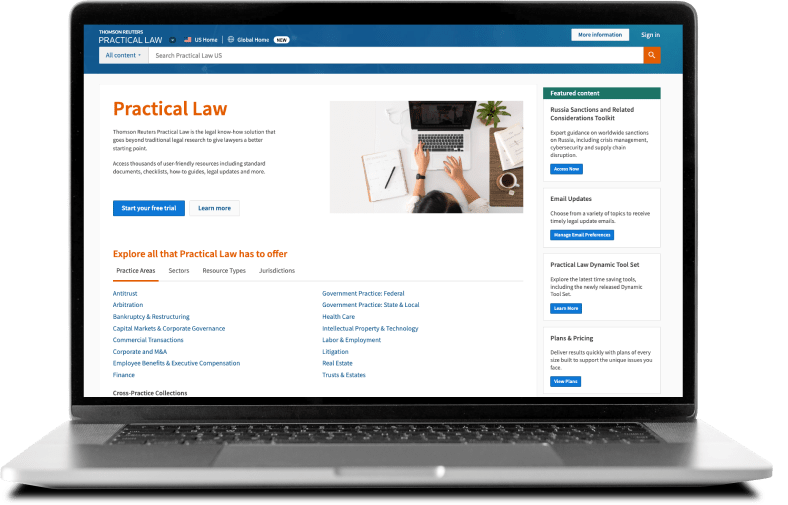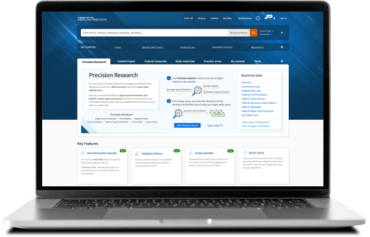This first part explores how legal tech supports lawyers in their most important work - research and other core legal tasks. Part two covers legal tech that manages processes and workflows of a legal practice, and part three explores how technology can help a firm market its expertise and grow its business.
Today’s lawyers have a lot on their plate. First, they engage in the core activities that constitute the practice of law. They do legal research. They advise clients on deals. They manage litigation. They draft pleadings, contracts, and other documents. All with the high quality that clients expect.
But that’s not all. Lawyers must also manage their workflow and collaboration with clients and colleagues. These are the nuts and bolts of their delivery systems and how they execute legal work efficiently.
And, finally, they have to focus on growing their businesses. They market their services, manage client intake, and manage their social media and other forms of market-facing content.
Most lawyers understand that technology can help with all these parts of their roles, but it’s not easy to keep up with how to integrate technology into their practice and where to turn for help.
This is the first of a three-part series designed to help lawyers navigate the wide range of technologies that can help them do their jobs more effectively, efficiently, and profitably.
Jump to ↓
| Case law research |
| Legal guidance and know-how |
| Digital evidence management |
| Drafting aids |
| Generative AI capabilities embedded across multiple use cases |
Case law research
Researching legal issues in case law has been revolutionized in recent years. The early generations of online legal research systems were a significant step forward, but they still demanded a lot from their users. Their primary function was built around search and retrieval, which still left a lot of work for lawyers: formulating search queries, poring through long lists of search results to find the relevant cases, and then using a citator to confirm the current validity of the cases found.
If you haven’t seen the new generation of research tools, they are worth a look because it’s a whole new experience:
- Instead of constructing complex Boolean searches with connectors, you simply ask your legal question in plain English.
- Instead of plowing through and reading a list of retrieved cases, you can now get a well-written response that answers the legal question and cites the cases the answer is built on so you can verify its accuracy.
- Westlaw Precision with CoCounsel goes beyond the simple search for relevance. It lets you sort and filter cases by attributes such as issue outcome, fact pattern, motion type, motion outcome, cause of action, and party type.
- The latest technologies built into the KeyCite citation service add a new layer of analysis. You can now instantly find connections between cases that would traditionally be difficult to uncover. The new KeyCite Overruled in Part flag shows you the specific point of law in a case that has been invalidated so that other valid points of law aren’t missed.
Read more about how the latest technology has enhanced legal research capabilities.
Legal guidance and know-how
Lawyers have always relied on the knowledge and experience of peers for their “How do I …?” questions. Practical Law was designed to leverage its editorial team’s vast legal experience, particularly with drafting templates, checklists for legal processes, and how-to guides for specific areas of legal practice.
AI has also enhanced the new generation of Practical Law. Search & Summarize Practical Law allows users to simply ask a legal question in everyday language. Practical Law will deliver a synthesized answer grounded in trusted Practical Law content with links to supporting materials. This application of generative AI and large language models eliminates much of the time lawyers need to spend sifting through, reading, and summarizing search results.
See how one firm has leveraged the legal expertise built into Practical Law.
Let’s continue our conversation.Digital evidence management
Managing the discovery process is another area in which technology has had a significant impact in recent years. The recent Thomson Reuters State of the Courts 2024 report documents how technology is reshaping how lawyers and litigants engage with court systems.
One of the report’s findings is that more than one-third (35%) of respondents now use digital evidence management systems — up from 27% in the last survey. More interestingly, nearly three-fifths (58%) of those who say they are not using a digital evidence management system think that having one would be at least somewhat beneficial for their operations.”
With digital evidence management systems, parties have an efficient way to review and analyze evidentiary materials in preparation for any hearing or dispute. The systems also provide a well-organized digital repository of all the key materials. Parties can also submit and share evidence with the court during hearings to reduce the amount of paper and time spent thumbing through stacks of paper or audio/video evidence.
Read how one Ohio court has reduced discovery time in traffic court cases to 48 hours, a process that typically could take up to 90 days.
Drafting aids
Drafting legal documents is central to legal work, and an area where technology can be a big help. In particular, searching, cutting, pasting, deleting, and editing contracts is one area where artificial intelligence shows off its remarkable capabilities.
One way that technology enhances drafting is by helping lawyers identify and integrate clauses found both inside and outside the firm’s own clause libraries. For example, Practical Law Clause Finder surfaces relevant clause language from Practical Law, from agreements filed with the SEC, and from a firm’s internal documents.
AI-driven technology helps identify these vetted, market-standard clauses. It centers this activity in the lawyer’s regular drafting environment, eliminating the need to hop in and out of drafting tools. AI and other technologies are creating “distraction-free drafting.”

CoCounsel Legal
Work smarter with CoCounsel, seamlessly integrated with Westlaw, Practical Law, Microsoft 365, and DMS partners
Go professional-grade AI ↗Generative AI capabilities embedded across multiple use cases
The impact of technology, and AI specifically, on all aspects of legal work has only just begun. The same core generative AI technology can be adapted to use cases across the lawyer’s workflow.
CoCounsel Legal already helps lawyers with everyday tasks with applications such as preparing for a deposition, drafting correspondence, searching a database, reviewing documents, summarizing a document, extracting contract data, and contract policy compliance. These tools are deployed across multiple Thomson Reuters legal products.
CoCounsel Legal brings both intuitiveness and power to these legal tasks. Lawyers need only ask plain-English questions or provide simple instructions, and the generative capabilities of CoCounsel return complete, authoritative answers, bypassing many of the tedious manual steps inherent in traditional legal work. The authoritativeness of those outputs is ensured when the underlying language models are operating on top of Thomson Reuters’ curated, vetted data sources.
The core of legal work is increasingly technology-driven
Legal research, drafting, evidence management and the other key legal tasks outlined above have been around as long as there have been lawyers. There is not much new about what lawyers do, but how they do it is evolving rapidly. If you think you have mastered the tools of your trade, think again because new legal tech to enhance your practice appear every day.
Read our blog series on a lawyer’s guide to legal tech: Optimizing processes and delivering a superior client experience Law firm marketing to boost growth |












